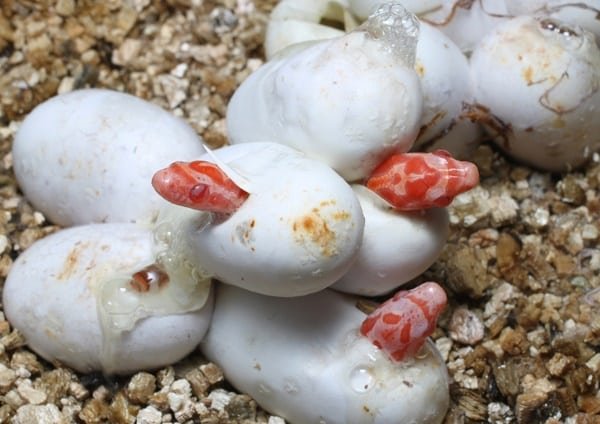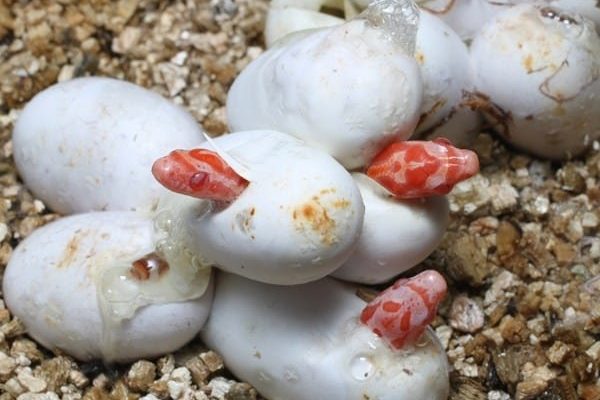
Corn snakes are not just popular pets; they’re also known for their vibrant colors and docile nature. This makes them great candidates for breeding. But where do you start? How does the whole process work? Honestly, it can seem a bit overwhelming at first. Don’t worry, though! Whether you’re a first-time breeder or someone wanting to learn more, I’ll guide you through every step, from mating through to managing the eggs and incubation.
Understanding Corn Snake Breeding Basics
Before you start breeding corn snakes, it’s important to grasp some basic concepts. First off, you need to ensure that your snakes are both healthy and of breeding age. Typically, a corn snake reaches maturity at around 2 to 3 years old. You want to make sure they have a proper diet and are free from any diseases before embarking on this journey.
Another key point to remember is that breeding is not just about putting two snakes together. It requires understanding their behavior, cycles, and even some basic genetics if you’re aiming for specific color morphs. Snakes don’t have the same courtship rituals as some animals, but they do go through certain mating behaviors that you should be aware of. Just like planning a dance, it’s all about timing and knowing your partners.
Here’s a quick checklist for breeding corn snakes:
- Ensure both snakes are healthy and mature.
- Learn about their breeding behaviors.
- Prepare a suitable environment for mating.
- Research possible color morphs if desired.
With these points in mind, you’re better equipped to take the leap into breeding corn snakes!
Setting Up the Mating Environment
Creating the right environment is crucial for successful breeding. Corn snakes prefer a specific habitat, so ensuring a comfortable space can make all the difference. Start with a good-sized enclosure—think of it like choosing the right venue for a party. It needs to be spacious enough for them to move around, yet cozy enough to feel secure.
You’ll want to keep the temperature consistent, around 75 to 85°F (24 to 29°C) during the day, with a slight drop at night. A warm hide and a cooler side of the enclosure allow the snakes to regulate their body temperature. Adding foliage or hiding spots is also a smart move, giving them places to retreat and feel safe.
Additionally, provide a shallow water bowl for hydration. Corn snakes can get dehydrated easily, especially during mating, when they tend to be more active. The moisture can also help the female prepare for egg-laying later on. So, think of these details like setting the mood before a dance—it just helps everything flow smoother.
Recognizing Mating Behavior
Once you’ve set everything up, the next step is to recognize mating behavior. Corn snakes usually mate in spring when temperatures rise and their natural instincts kick in. You might notice the male starting to follow the female around the enclosure—this is his way of courting her. Here’s the thing: during this time, he may also engage in *”tail rubbing,”* which looks a bit like dancing.
Mating can last for several hours, and it’s normal for the male to mate multiple times with the same female during this period. You might also notice a behavior called “hemipenes,” where the male has two reproductive organs, only one of which he uses at a time. It’s fascinating stuff!
If everything goes well, you should see the female exhibiting changes in body shape and behavior after a few weeks. She may become more reclusive or less interested in food, which indicates she might be gravid (pregnant). Timing is everything, so keep an eye on them as the weeks progress.
Egg-Laying Process
When it’s time for the female to lay her eggs, she’ll look for a warm, humid spot—much like a cozy nook you’d choose to settle down for a nap. This is where having a separate egg-laying box can be extremely helpful. You can create one by filling a container with moist substrate, like vermiculite or perlite, to mimic the right conditions.
Once she starts laying, it’s important not to disturb her. Typically, a female corn snake will lay between 10 to 30 eggs, depending on her age and size. After she’s done, she’ll usually leave the eggs behind to incubate. It’s crucial to remove the eggs gently and place them in an incubator or a suitable container, as this will increase their chances of hatching successfully.
Here’s the simple breakdown of the egg-laying process:
- Prepare an egg-laying box filled with moist substrate.
- Allow the female to lay her eggs undisturbed.
- Carefully remove the eggs and place them in an incubator.
Watching this process unfold can bring a sense of awe, kind of like seeing a garden bloom after you’ve planted the seeds.
Incubating Corn Snake Eggs
The incubation phase is where the magic happens. Ideally, corn snake eggs should be kept at a temperature of about 80 to 85°F (27 to 29°C) with a humidity level around 70%. Maintaining stable conditions is key, just like keeping a cake in the oven—too much heat or too little can mess things up.
For incubation, use vermiculite or perlite as substrate, and make sure it stays slightly damp but not soaked. It’s a delicate balance! Over the next 60 to 70 days, you can peek occasionally to check for moisture but avoid disturbing them too much.
During this time, the eggs may start to show signs of life. You might notice some slight movement or even a change in color. When they start to hatch, expect to see small slits forming on the eggs. It’s like watching a miracle unfold right before your eyes!
Welcoming the Hatchlings
When the hatchlings finally emerge, it’s like opening the door to a new adventure. Baby corn snakes, or hatchlings, are generally independent right from the start. They don’t need their mother and can be gently moved to individual containers for feeding.
These tiny snakes usually begin eating within a week or so, often starting with small pinky mice. It’s important to monitor their feeding and health closely during this early stage. Providing them with a suitable environment, similar to what their parents had, will help them thrive as they grow.
As you start this new chapter, don’t forget to keep track of their colors and patterns if you’re interested in their morphs. Each one may end up looking a bit different, making for an exciting display of genetic diversity.
Common Challenges and Tips
Like any undertaking, breeding corn snakes comes with its challenges. You might face issues like egg infertility or even poorly timed mating. One of the most common problems is egg slippage, where the eggs come loose from their mother.
To prevent this, ensure your female has a proper environment throughout her gestation. If you notice eggs that aren’t developing as they should, don’t be afraid to consult a herpetologist or a snake breeding forum for guidance.
Also, patience is key. If something doesn’t go as planned, take a breath. Every breeding experience can teach you something new. Think of it as part of the adventure—every hiccup adds to your story as a breeder!
In essence, breeding corn snakes is a rewarding experience filled with learning opportunities. By understanding their needs and behaviors, you’re not just bringing more snakes into the world; you’re fostering a deeper appreciation for these incredible creatures. Stick with it, and you’ll find it’s a journey worth taking!

